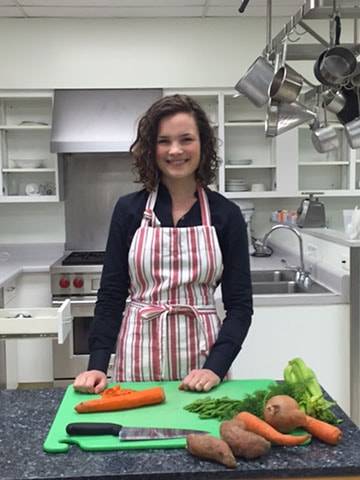Clean Eaters Can Beat Thanksgiving Food Hangover
Saint Louis University Dietitian Suggests Tips to Avoid Falling off Healthy Eating Wagon
After months of being a "clean" eater who pooh-poohs processed foods, shies away from cream and has trained your palate to prefer vegetables and fruits, along comes Thanksgiving.

The rich meal of stuffing, classic green bean casserole, mashed potatoes and pecan pie can be a shock to your system if you're not accustomed to eating such heavy foods, says Whitney Linsenmeyer, instructor of nutrition and dietetics at Saint Louis University, and a confessed clean eater.
"People can feel uncomfortable and have gastrointestinal distress if they eat a large amount of indulgent foods, even for a day," Linsenmeyer says. "It's like putting fuel in a car. When you put in a different type that is not what the car is built for, it will react differently. Your body becomes accustomed to eating certain foods, and switching can be difficult."
Of course, you can take steps to avoid a food hangover by bringing a healthy dish to the buffet, eating a decent breakfast and lunch before the big meal, and consuming more salad, vegetables, white meat turkey and cranberry sauce than anything else. There's no sin in eating healthy, even on Thanksgiving. Don't be afraid to embrace it, Linsenmeyer says.
At the same time, many families serve once-a-year, special foods on Thanksgiving. "You want to be able to partake in those because they are part of your family's customs and traditions," she says.
So, if you refuse to wear elastic waist pants to Thanksgiving dinner and detest that too full feeling even more than you love yeast rolls slathered in butter, Linsenmeyer offers these strategies for enjoying the heaviest meal of the year.
Make one your magic number: While others are going through the food buffet line for seconds and thirds, make only one trip.
Say yes and praise effusively: Instead of turning down your mother's cream-infused and buttery mashed potatoes, take a golf ball sized portion. Or enjoy two bites of pumpkin pie instead of a large slice. Then, rave about how delicious these foods are and ask if you can bring some home to enjoy later.
Eat like a European: Across the pond, a meal can take hours as those in Europe enjoy multiple courses and eat very slowly with conversation and socializing to spice up the gathering. Savor every bite as you give your body time to digest your food. It's not a race, it's a dinner where you have plenty of time to talk about your blessings.
Aim for seven: Practice mindful eating and gauge how full you are before you start eating, as you eat and after your meal. With one being famished and 10 being ready to pop a button, aim for winding up at a seven to avoid being uncomfortable.
Take a food break: After the main meal and before you enjoy dessert, convince your family to join you for physical activity such as a walk or game of soccer or touch football.
"Thanksgiving can derail an entire year of healthy eating and start a holiday season of eating a totally different diet. Some people continue to eat poorly during the Christmas holiday season and come January, they make an annual resolution to change their habits," Linsenmeyer says.
"Instead of falling into a yoyo pattern of weight gain and weight loss, try to maintain your weight throughout the holiday season. It's generally easier to maintain your weight than it is to try to lose weight after gaining a few pounds."
Long a leader in educating health professionals, Saint Louis University offered its first degree in an allied health profession in 1929. Today the Doisy College of Health Sciences offers degrees in physical therapy and athletic training, biomedical laboratory science, nutrition and dietetics, health informatics and information management, health sciences, medical imaging and radiation therapeutics, occupational science and occupational therapy, and physician assistant education. The college's unique curriculum prepares students to work with health professionals from all disciplines to ensure the best possible patient care.
* This story was originally posted in 2015.

















